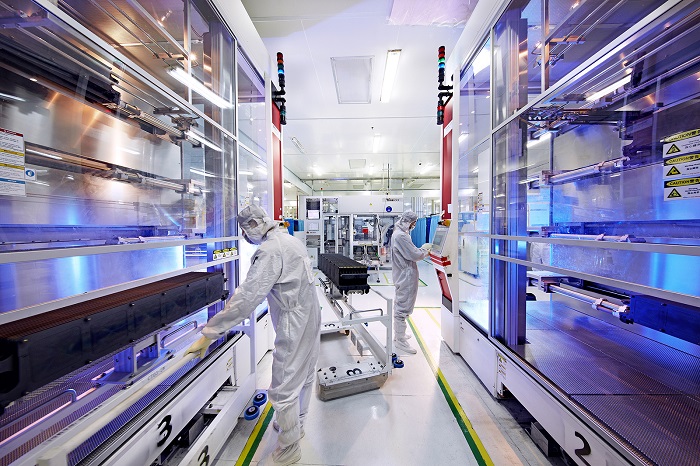Record-low solar prices could claim a series of victims over the coming months as a growing number of solar companies reconsider their investment and manufacturing plans, reported Bloomberg New Energy Finance (BNEF) at its Shanghai summit on Wednesday.
Speaking at the event, Trina Solar’s CEO Jifan Gao revealed that the Tier-1 Chinese solar company is reconsidering its plans to build a PV manufacturing fab in India because prices there are now “too low”. This decision comes after the vertically integrated firm has already secured a site for the proposed fab.
Solar auctions across Asia are impacting PV prices, delivering ever-cheaper solar energy for consumers but spreading nervousness and doubt among developers, BNEF said. Trina’s Gao added that he expects the price of solar panels to fall a further 40% by 2025, with his company forecasting profits to be generated in other segments of the business – rising from a 40% profit share this year to as much as 66% by 2020.
But for the wider PV landscape, the BNEF summit was not all doom and fear. The global storage market is accelerating demand for lithium, with mining company Galaxy Resources CEO Anthony Tse telling delegates that demand will quintuple to 800,000 tones by 2025. In 2016, demand was 200,000 tons, and to meet this expected appetite sums in the region of $9 billion will be required, Tse said.
The bulk of the increase in demand will come from the Electric Vehicle (EV) space, said BNEF storage expert Logan Goldie-Scot. “It’s a remarkable change that’s really being driven by passenger EV sales,” he said, telling the audience that Asia will be in the driving seat for lithium-ion battery production. “You’ll have better batteries, cheaper batteries and you’ll see them in more things.”
Popular content
In the stationary storage segment, BNEF forecasts annual demand for lithium-ion batteries to rise from 2 GWh in 2016 to more than 70 GWh by 2030.
China, which is on course to install more than 50 GW of solar capacity this year, could also assume a more global leadership role in the fight against climate change following the refusal of the U.S. to follow the Paris Accord this year. The BNEF summit explored the potential impact of U.S. withdrawal from the pact, leading JinkoSolar’s VP Dany Qian to remark that Trump’s walk-away cannot halt the rise in renewables.
“We think it gives China an opportunity,” Qian told Bloomberg. “By 2030, total global investment in renewables will reach $6 trillion. Any government that cares so much about jobs will not ignore these opportunities. We believe that the U.S. will change its mind.”
Corrine Lin, independent PV analyst, told pv magazine that there is likely to be a solar installation boom in China in the second quarter (Q2) of next year following a bottoming-out of module prices around late March, driven by increased polysilicon and wafer volumes. The U.S. Section 201 case, should it be finalized with new tariffs, would deliver a slight price boost in the U.S. market after January next year, which could help stabilize average selling prices globally.
This content is protected by copyright and may not be reused. If you want to cooperate with us and would like to reuse some of our content, please contact: editors@pv-magazine.com.


By submitting this form you agree to pv magazine using your data for the purposes of publishing your comment.
Your personal data will only be disclosed or otherwise transmitted to third parties for the purposes of spam filtering or if this is necessary for technical maintenance of the website. Any other transfer to third parties will not take place unless this is justified on the basis of applicable data protection regulations or if pv magazine is legally obliged to do so.
You may revoke this consent at any time with effect for the future, in which case your personal data will be deleted immediately. Otherwise, your data will be deleted if pv magazine has processed your request or the purpose of data storage is fulfilled.
Further information on data privacy can be found in our Data Protection Policy.